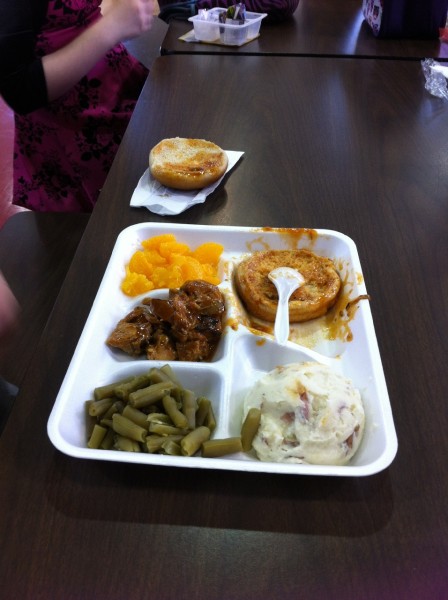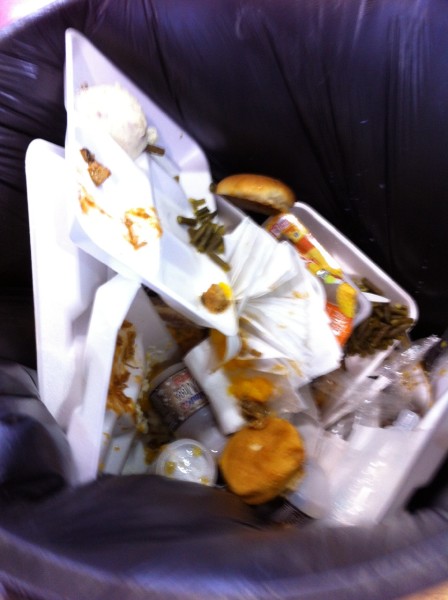I am very fortunate to be able to volunteer occasionally at my children’s school with the lunch duty. I enjoy watching children eat, chat, laugh, hop, skip, and even argue for a couple of hours. During this time, I get to watch my children interact with others, make sure they eat enough, but also show them that I love them and care about them and their school. In addition, all faculty and staff at the school are very welcoming and appreciative of this gesture. In this reflection, I wanted to share my appreciation and present some opportunities that I think await our lunchroom.
Appreciation:
When I was in grade school, there were two options — a packed lunch (tiffin) or a hot lunch at the school cafeteria (canteen). Most days, I had a packed lunch, or my parents would have someone bring my lunch during lunch hour. Whenever we decided to do a hot lunch, even though my parents thought they gave me a reasonable amount of money, it was not enough. I still remember one incident: My mom gave me some money for lunch, but I dropped it in a storm water drain. That day I had to forgo lunch.
When my children bring home their lunch menu each week, I am thrilled with the choices they have. The menu usually is very well organized and balanced. I could not have prepared and packed the wholesome warm lunch every day that the school offers. For that I am very grateful. More importantly, I would not be able to get that plate for $1.10 anywhere. I also understand I am paying it somewhere somehow. However, I feel that the school system is doing a tremendous job in providing healthy meals and also making sure there is no discrimination, even if you didn’t bring enough money that day.
Opportunities
I have a confession to make. I have a problem with waste and inefficiencies. During my lunch duty, I witness tremendous a amount of waste and would like to start this conversation on waste reduction. At my home, every week, we go over the menu and pack lunches on the days they would not like what the menu offers.
I witness challenges our school system has that I have observed over time. This is not to be critical but to engage in a positive direction we all can benefit from. We are missing out on a great opportunity to teach our children a “Vision of a More Sustainable World.” At home, I have taught my children not to waste food, only take what they will eat, and always compost and recycle. Then I watch my children get servings from the lunch provider on a disposable plate, use plastic utensils, get a milk bottle, eat what they can, look around, and dump everything in one big trash bin. For some selfish reason, I am afraid my children are getting conflicting view of the values I am trying to teach at home, and what they see at school. They are not being reinforced on 4R’s of Refuse, Reduce, Reuse, and Recycle, but more importantly, personal accountability and responsibility.
I know kids are eager and willing to learn, but they also like to do what their peers are doing. For that reason, I think we need to start this dialogue. I know there is enough support for this kind of idea, but we need to collectively work on filling the gaps and connecting the dots.
Here are few ideas I have that we can do:
Refuse: Let children have the option to refuse what they will not eat. For example, my older daughter would never eat raw broccoli. But she will get it as part of the meal. She does not have the option to refuse something that she will not eat. I heard it is guideline that everyone should get an exact serving, and they can throw it out if they don’t like it. Refuse to use disposable items, which will just add on to the landfill. I will have no problem packing a bag of utensils and a plate in my children’s book bag.

I have also witnessed the mismatch. While little kids throw out most of their food, older kids (5th grader) are asking if they can get second serving. I am not sure if there is a guideline for that as well, but I heard that second servings are not allowed. Maybe they should be offered as long as they are asked for. Obviously, older kids should eat more than kindergartners.
Reduce: Let children decide on the serving size. The cafeteria should ask what type and how much food they would like. Reduce the amount of plastic utensils and bottles thrown away by using reusable alternatives. Maybe have students put unwanted items in a bin before they start eating. This leads me to the next R.
![IMG_4153[1]](https://weelunk.com/wp-content/uploads/2014/10/IMG_41531-e1426266059614-448x600.jpg)
Reuse: Find alternatives to use cups, utensils, and lunch trays that could be reusable as I already stated in the refuse section.
Recycle: Teach children the value of recycling. Although recycling should be the last resort, it is very unsustainable to throw plastic bottles and biodegradable food waste in the trash, which ends up in landfill. Food waste in the landfill creates methane, one of the harmful greenhouse gases.
I have witnessed that each day school cafeteria creates a lot of trash. Sometimes a milk bottle is thrown away unopened. Most of these end up in a landfill. I believe we can use this as an opportunity to teach our children that we live on a finite planet and we can early on teach them how we can go full circle instead of a linear cycle from plate to landfill, where it ends.
We can be a part of a Food rescue program like USDA’s Food Waste Challenge and EPA’s Food recovery challenge, so that instead of throwing away unused food, it can be donated to the hungry. The numbers of poverty and food insecurity in this country and locally are staggering. We can be a part of a community that abides by USDA and EPA guidelines. According to USDA, “K-12 schools have a special role in not only reducing, recovering, and recycling food waste on their premises, but also in educating the next generation about recovering wholesome excess food for donation and about reducing food waste to conserve natural resources.”

Therefore, waste reduction should be a part of the school system’s mission statement, not entirely the responsibility of the parents. As they say, it takes a village to raise a child; it takes a community to raise a global citizen. Waste reduction can be as easy as follows:
Set up a waste station with a table for stacking trays, a slop bucket with colander to empty leftover drinks, a blue bin for plastic bottles, and a green compost bin for food waste and napkins!
I am happy to know that unused food is donated to the Soup Kitchen, and that recycling has been attempted in the past. I am positive that with proper signs and directions, children will have no problem following the station rules. Since older kids are the last ones to eat, 3rd to 5th grade classes could have a management position, to monitor the waste station. Each team of monitors could make sure they take care of organized stacking, checking contamination of garbage in the recycling bin, and taking care of the recycling and compost. In a perfect scenario, each school could have their own compost pile and a school garden.
I would love to have students in my college classes that have developed these leadership, organization and management skills at this early age. They will come with a sense of responsibility and personal accountability that we need now more than ever.
I am not trying to reinvent the wheel or stating anything new. The school cafeteria model exists in most places and has been successful. I think if we internalize the long-term cost of waste in our present value cost, this wouldn’t be an issue that needs discussion.
Here is an idea and a chance to create a better Wheeling for ourselves: give recycling and composting businesses a chance for increased supply chain; give organizations like Grow Ohio Valley an opportunity to teach and provide a healthy school system where children learn social responsibility; and respect and values that would last a lifetime. I welcome our Wheeling community to join this conversation and be a part of this change. How about starting with USDA’s food waste reduction guideline?
Note: This story is a personal observation and reflection based on an elementary school under Ohio County Schools and may not be applicable to other schools. There may also be challenges and better solutions to this scenario.
Photos by the author.


